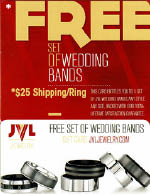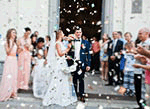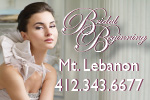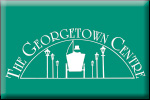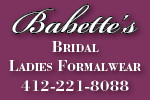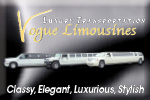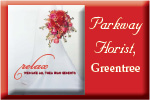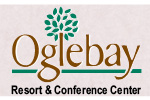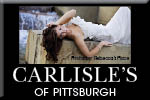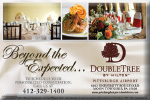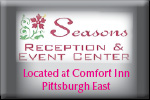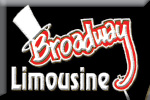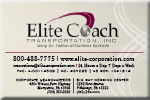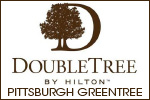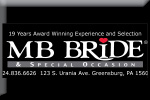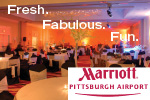Wedding Stationery
No element of a wedding carries as much timeless elegance as well-chosen stationery. Along with the invitation, there are announcements, thank you and other note cards (formal and informal), at-home cards, wedding programs, and table place and menu cards. Other printed items may include directional maps, accommodation and transportation cards, ribbon favors, matches and napkins.
Bridal suppliers and printers offer dozens of sample books to browse. Keep in mind, you can choose almost any type style and color on any invitation. Your stationery source can help you decide on a style that suits your wedding (based on formality, time of day, season and color scheme). They can also help you choose the correct wording in any given situation.
Generally, the color of your stationery should match that of your wedding gown: a white gown would suggest a white paper stock, an ivory gown, ivory stock. Colored paper is also an option, coordinating with your wedding colors.
Wedding stationery can be engraved, embossed or printed, combined with calligraphy or hand-written type. Calligraphy may be done by computer or by hand (see the following calligraphy section).
Invitation Wordings
When preparing your invitations, generally you do not include the street address of ceremony or reception sites. If the location is difficult to find, or its name is easily confused, the inclusion of the street address may be necessary. You can also substitute more of an identity for the city; instead of the mailing address, “Pittsburgh,” use the neighborhood’s name, “Penn Hills.” If the wedding is held in a private residence, always include the street address.
Custom dictates certain styles and wordings, such as the British spellings of “honour” and “favour.” Each situation follows a rule. For example, if the bride is a doctor and her parents issue the invitation, her title should not be used. However, if the b
ride and groom issue the invitation, the bride’s name should be preceded by her title, (e.g., Dr. Mary Elizabeth Jennings). When the bride is in the military service, the information on her rank and branch of service is excluded unless it is a military wedding.
Enclosures
Reception Cards indicate the time and place of the reception. These are optional only if everyone invited to the ceremony is also invited to the reception. In that case, the reception information can be included on the invitation itself. Should you have a group you wish to invite to the ceremony, but not the reception, invitations should contain only ceremony information and separate reception cards should be ordered. Additionally, this is the format necessary if you wish to invite black tie attire. The lower left corner of the reception card should carry the notation, “Black Tie Invited.”
Response Cards will help to determine the number of people who will attend your wedding. Should you prefer the courtesy of a handwritten reply, you may either include the phrase, “The favour of a reply is requested” on your reception card (never on the invitation). A response card is sent with its own self-addressed, stamped envelope.
Map Cards, Accommodation and Transportation Cards can be ordered from the stationer and will provide clear directions and information about the hotel, ceremony and reception, out-of-town guest accommodations, and/or transportation (car rental, airport limousine service, etc.). Most brides cover all of this information on a carefully drawn and photocopied map that includes phone numbers and addresses of hotels, etc.
At-Home Cards provide friends and relatives with the address and telephone number of the couple’s home, and the date which they can be contacted there. These can be an ideal way to inform everyone of the couple’s name(s), especially if the bride is retaining her maiden name or if the couple is assuming a
blended last name. These can be included with the invitation and announcements, or sent later with the thank you notes.
Announcements are sent to people not invited to the wedding, but who would be interested in knowing of the wedding. These are mailed the day of the wedding after the ceremony has taken place.
Formal Notes, Informal Notes, and Thank You Notes are folded sheets engraved or embossed with your married names, your monogram, or “Thank You.” All of these can be used to write your thank you notes, as well as after the wedding for personalized note cards.
Place Cards are cards used at the reception listing the guests’ names and table number where they are to sit. These can be handwritten or filled in by a calligrapher, and can be printed with the couple’s name and date if desired.
Menu Cards are printed cards detailing the menu for the evening. Larger cards can be placed one to a table and smaller cards are often placed on each plate.
Wedding Programs are printed guides to the ceremony and are handed out by greeters at the ceremony.
Matchbooks are readily available in colors and styles to coordinate with your color scheme. Often, personalization can match the invitation.
Napkins are also available in many different colors, patterns and styles. Napkins are available in dinner, luncheon and beverage sizes. If you are ordering napkins to wrap slices of cake in, be sure to order at least the luncheon size.
Other personalized accessories are available. Check with your stationery source to see what they offer.
Ordering Invitations
When ordering invitations, be sure to order a sufficient quantity the first time since reorders will be considered and charged as new orders. Order enough to send invitations to all of your attendants, your officiant, as well as to provide mementos for yourself and all of your parents. If you have children, you should save an i
nvitation for each of them. Keep in mind that persons over the age of 18 residing with their parents should receive a separate invitation.
Place your stationery order a minimum of four to six months prior to the wedding. Ask to have the outer mailing and inner envelopes delivered early so that they can be addressed and ready to mail when the invitations arrive. Be sure to order at least 10 percent more envelopes than invitations to allow for mistakes.
Always proofread the order forms and ask two or more friends to verify accuracy and spelling. Items to be double-checked:
1. Paper Color, Texture, and Weight
2. Style, Type Style, Color of Type
3. Wording and Spacing
4. Date and Time
5. Locations and Addresses
6. Spelling
7. Punctuation
Postage
Consider postage costs when choosing stationery, as larger invitations may require additional postage.
Before purchasing stamps for the invitations, take a complete invitation, with all enclosures (including maps, etc.) to the post office to be weighed. Remember to purchase stamps (“Love” or another appropriate design) for the response card envelopes. Invitations should be mailed four to six weeks prior to the wedding.
Proper Form
Wedding invitations should be addressed by hand in black ink. When addressing your invitations and announcements, abbreviations should be used only for Mr., Mrs., Ms., or Dr. Street addresses, post office boxes, cities, and states should be spelled out.
Jr., junior, II, III, and IV are all properly preceded by a comma. Jr. is always capitalized when abbreviated, but never when it is spelled out.
Guests with professional titles should be properly addressed; “The Honorable” should be used before a judge’s name. This holds true for clergy as well ( “The Reverend,” “Father” or “Rabbi” John Smith).
If you are sending an invitation to a married couple, both of w
hom are physicians, you should address the invitation to Dr. Sarah Rushman and Dr. Evan Rushman. The same form is used if they are both Ph.D.s and use their titles.
People with live-in partners should receive one invitation with their names written on separate lines in alphabetical order. This also holds true for married couples when the wife has retained her own name.
The inner envelope does not include first names or addresses. Just list your guests as “Mr. and Mrs. Smith,” or “The Drs. Smith.” The first names of invited children under 18 are printed on a separate line.
When writing a note of thanks, the writer should sign only her/his name, since the couple cannot write the note together. The partner’s name should, however, be mentioned.
Proper Placement
Proper placement of enclosures within the invitation requires that they first be placed in their accompanying envelopes. The small piece of tissue is placed over the type on your invitation, and the enclosures are placed directly on top of the tissue. The whole package is then placed into the inner, ungummed envelope, fold-side down, with the type facing the envelope’s flap. The ungummed envelope is then placed in the outer envelope so that the inner address faces the outer (gummed) envelope’s flap.
You may include a card indicating where you are registered for wedding gifts. Also, ask your mothers, bridal party members, and close friends and relatives to inform guests about your bridal gift registries. Be sure to check out the Addressing Invitations, Invitations Worksheet, and Guest and Gift List under: For Brides: My Bridal Suite
Questions for Your Stationer
1. Who is responsible for mistakes?
Always keep a copy of the exact order and proofread it carefully! Mistakes made by the printer should be reprinted at no cost to you. If you made a mistake on the order, you will probably have to cover the cost of reprinting. It is possible to r
equest a proof of your invitation from the printer, which you must approve prior to the actual printing. There is usually a charge for this.
2. Can I get the envelopes ahead of time to start addressing them?
If you order far enough in advance this will not be a problem. If you’re pressed for time, ask if there is an extra charge for quick delivery.
3. What is the charge for additional inner and outer envelopes?
Always order 10 percent more envelopes than invitations to allow for mistakes - yours or your calligrapher’s.
Calligraphy
Calligraphers can do as little as address your invitations and complete your placecards to as much as custom design your complete wedding stationery package. If you are using an heirloom cake top or displaying old pictures at your reception, the calligrapher can custom design signs providing interesting information on each. Table menus done in calligraphy make an elegant statement on the guests’ tables. Calligraphy can enhance the title pages of your guest book, photo album and/or Bible. Consider having your marriage certificate done in calligraphy for presentation to your officiant.
If you are interested in ordering invitations from a calligrapher, you should allow several extra weeks in your timetable. Once the calligrapher has developed your invitation to your satisfaction, be sure to carefully review the camera-ready artwork before it is sent to the printer.
If you are only having your invitations and/or placecards lettered, the process will not take as long. Envelope sets should be delivered to the calligrapher at least one month prior to the date the invitations are to be mailed. Purchase at least 10 percent more envelopes (both inner and outer) than you will need to allow for error.
While black ink is still the most popular choice, your calligrapher may offer different colored inks as well. Be sure to see samples of the lettering and ink on your actual stationery before making
your final decision.
Choosing a Calligrapher
The best way to choose a calligrapher is to see previous work and ask for references. Also ask friends or relatives who may have had work done in the past. Try not to let price be your only guide. As with any specialized service, those who command higher prices sometimes do so because they are very good and in great demand. Many calligraphers specialize in one or two styles of lettering, while others have perfected a broad range of styles. Keep looking until you find the lettering style you have in mind.
Computerized Calligraphy
Many local stationers offer computerized calligraphy service. This method produces a professional and impressive look quickly, often while you wait. Many styles are available and you also have the option to mix different styles. Colored inks are also available. Computerized calligraphy is a great alternative to hand calligraphy. You may want to check into both options, getting samples and quotes before you make a final decision. |

